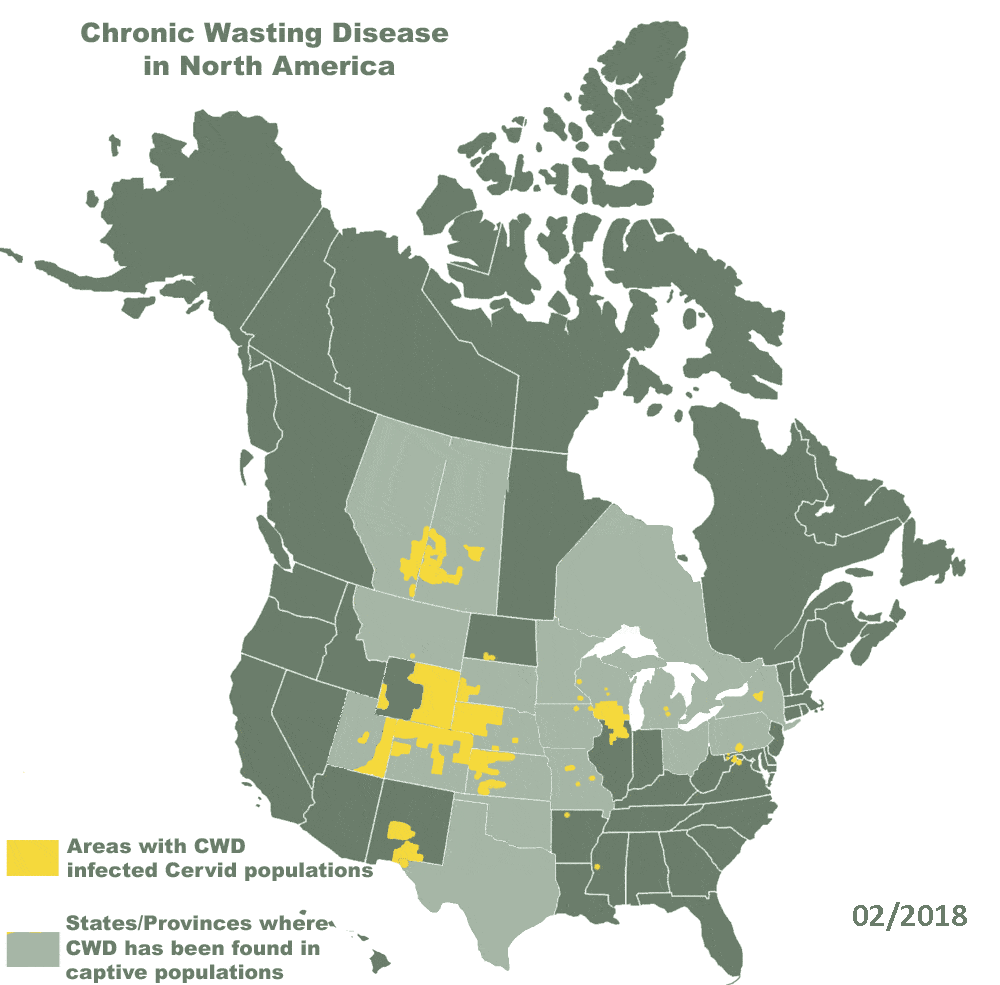
Chronic Wasting Disease & What It Means for Hunters
CWD, or chronic wasting disease, is a contagious neurological disease that can affect deer (mule & whitetail), elk and moose. It causes deterioration of the brain, which leads to things like strange behavior, loss of function, and ultimately death.
Some brief history…
Chronic wasting disease was first discovered in captive mule deer in Fort Collins, Colorado in the late 60’s by researchers at the Colorado Division of Wildlife Foothills Wildlife Research Facility. About a decade later in 1978, CWD was classified as a TSE, or Transmissible Spongiform Encephalopathy – another, more commonly-known TSE is mad cow disease. In the years that followed, researchers in Wyoming, Canada, Colorado and South Dakota began to find CWD spring up in captive and native deer populations, and the fist cases among elk were also discovered.
What signs do infected animals show?
Adult animals are more likely to show symptoms, and some of these include weight loss, strange behavior, frequent drinking & urination. However, these conditions are not enough to determine if an animal has chronic wasting disease. The only conclusive test for CWD is an examination of the brain, tonsils, and lymph nodes performed after death.
Infected Meat
The general rule of thumb here is that if a deer/elk/moose is harvested in a CWD zone, it should be tested before consumption. Local wildlife officials may have the ability to test for CWD, or at least some direction to a resource that is able. Additionally, some states have adopted carcass transportation regulations that do not allow the transport of the brain or spinal column tissue in attempts to lessen human and animal exposure and infection. There is no evidence that CWD poses a risk to humans, but health officials recommend that people avoid contact while they continue to evaluate the situation.
The Future
In 2002-2004 in Colorado alone, about 1-2% of the population tested positive for CWD. In 2017, about 15% of the population tested positive. Without intervention, this disease will substantially reduce populations by lowering adult survival rates, and it will alter the management of populations.
For more information about this issue, visit the CWD Alliance website.
